Have you ever wondered if the wall plug-ins you use to freshen up your home are safe for your feline friends? With their curious nature and delicate health, it’s essential to ensure that our pets are protected from any potential hazards. In this article, we explore the safety of wall plug-ins and their impact on cats, providing you with valuable insights to ensure the well-being of your beloved furry companion.
What are wall plug-ins?
Definition
Wall plug-ins, also known as plug-in air fresheners, are small devices that are designed to emit fragrance into the air to create a pleasant scent in indoor spaces. They typically consist of a container of scented liquid or solid, which is heated or vaporized by an electric heating element and released into the surrounding air. These plug-ins are widely used in homes and offices to mask unpleasant odors and create a more inviting atmosphere.
Types of wall plug ins
There are various types of wall plug-ins available in the market, each offering a different type of fragrance or air freshening technology. Some common types include:
- Electric diffusers: These plug-ins release fragrance by heating scented oils or wax using an electric heating element.
- Potpourri plug-ins: These plug-ins contain scented potpourri or dried flowers, which release fragrance when heated.
- Air freshener plug-ins: These plug-ins typically use liquid or solid-scented refills that are heated and released into the air.
- Insect-repellent plug-ins: These plug-ins emit a scent that repels insects, such as mosquitoes or flies.
- Essential oil diffusers: These plug-ins use ultrasonic technology to disperse essential oils into the air, providing both fragrance and therapeutic benefits.

Potential dangers of wall plug-ins for cats
While wall plug-ins may be convenient and effective in freshening up indoor spaces, it is important to be aware of the potential dangers they can pose to our feline companions. Cats are curious by nature and may come into contact with these devices, putting them at risk of various hazards.
Toxicity of wall plug ins
One of the major concerns with wall plug-ins is the potential toxicity of the chemicals used in the scented refills. These refills often contain synthetic fragrances, which can release harmful volatile organic compounds (VOCs) into the air. Cats are more sensitive to these chemicals compared to humans, and prolonged exposure to VOCs can lead to respiratory issues and other health problems.
Risk of electrical shocks
Another danger associated with wall plug-ins is the risk of electrical shocks. Cats are known for their playful nature, and they may attempt to chew on or play with the electrical cords of these devices. This can result in electrical shocks, which can be potentially life-threatening.
Fire hazards
Wall plug-ins that use heat to release fragrance can also pose a fire hazard. If left unattended or placed near flammable materials, such as curtains or furniture, they can cause a fire if the heating element malfunctions or overheats.
Burn injuries
Cats may also accidentally touch or come into direct contact with the hot surfaces of wall plug-ins, leading to burn injuries. This can occur when cats jump on or explore surfaces where these devices are plugged in.
Choking hazards
Some wall plug-ins have small parts or inserts that can be easily dislodged or chewed on by cats. If swallowed, these small parts can pose a choking hazard and may require immediate medical attention.
Allergic reactions
Cats, like humans, can be allergic to certain fragrances or chemicals used in wall plug-ins. Exposure to these substances can trigger allergic reactions in cats, including skin irritation, itching, and respiratory distress.
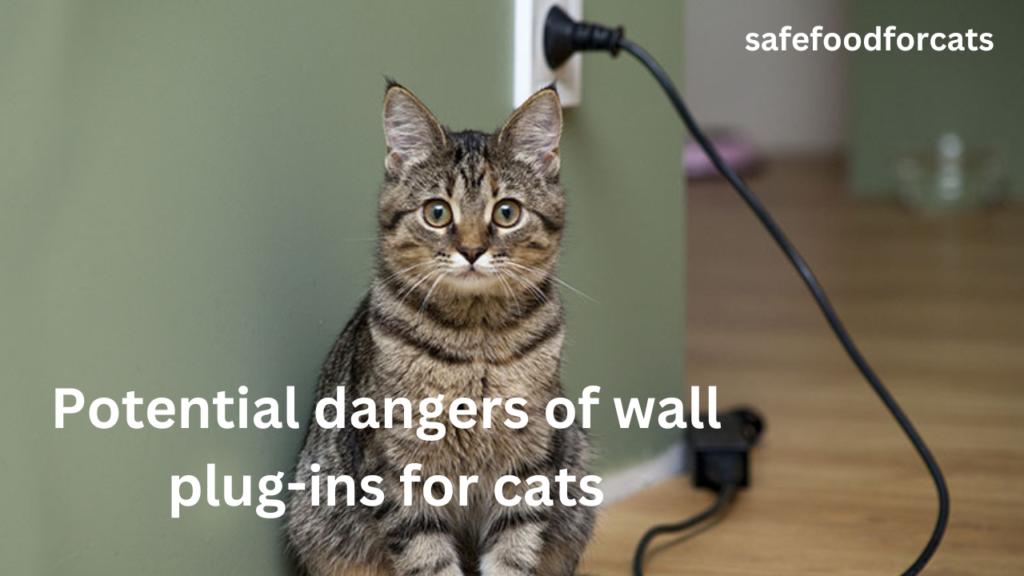
Specific concerns regarding different types of wall plug ins
Different types of wall plug-ins have their own unique risks and considerations when it comes to cat safety. Here are some specific concerns associated with each type:
Electric diffusers
Electric diffusers often use concentrated essential oils, which can be toxic to cats if ingested or applied directly to their skin. Cats have a limited ability to metabolize certain compounds found in essential oils, such as phenols and terpenes, which can lead to adverse effects.
Potpourri plug-ins
Potpourri plug-ins can contain dried flowers, herbs, or other botanicals that may be toxic to cats if ingested. Cats may be attracted to the smell or texture of the potpourri and may attempt to eat it, resulting in gastrointestinal issues or poisoning.
Air freshener plug-ins
Air freshener plug-ins typically release a steady stream of chemicals into the air to mask odors. These chemicals can irritate a cat’s sensitive respiratory system and can trigger asthma attacks or other respiratory issues.
Insect repellent plug-ins
Insect-repellent plug-ins often contain chemicals such as pyrethroids, which are toxic to cats. Cats are more susceptible to the toxic effects of these insecticides, and exposure can result in neurologic symptoms or even seizures.
Essential oil diffusers
Essential oil diffusers are popular for their natural fragrance and therapeutic benefits. However, many essential oils are toxic to cats, including tea tree oil, citrus oils, and certain floral oils. Cats can experience adverse reactions if they come into contact with these oils, either through ingestion, inhalation, or direct skin contact.
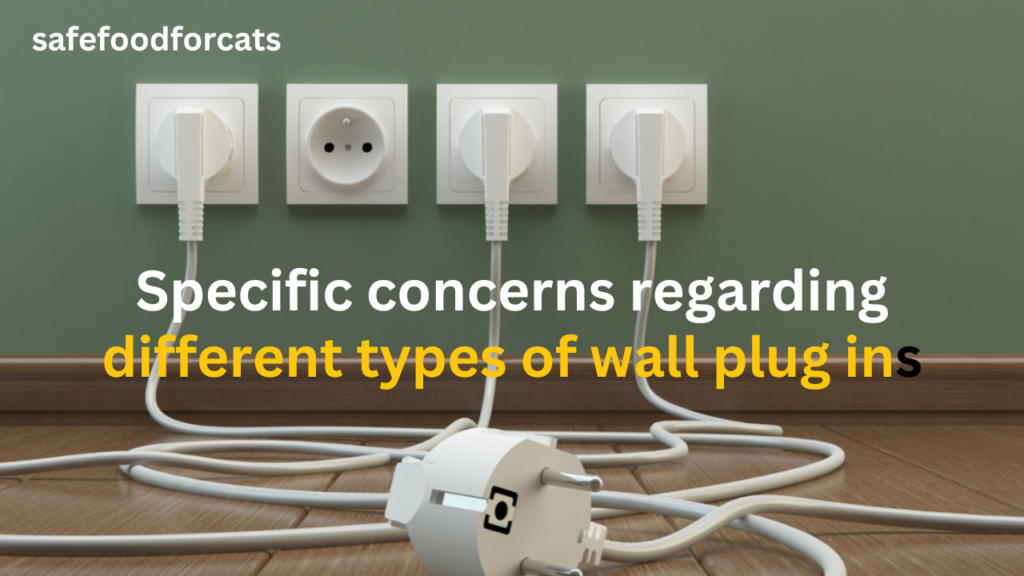
Signs and symptoms of wall plug-in exposure in cats
It is important to be vigilant and recognize the signs and symptoms of wall plug-in exposure in cats. If you suspect your cat has been exposed to wall plug-ins, watch out for the following signs:
Respiratory issues
Exposure to wall plug-ins can result in respiratory issues in cats. Watch out for sneezing, coughing, wheezing, or difficulty breathing. Cats may also show signs of increased respiratory rate or effort.
Drooling and excessive salivation
Cats exposed to toxic substances may drool excessively or experience increased salivation. This can be a sign of ingestion or exposure to irritants.
Vomiting
If your cat has ingested any part of a wall plug-in or its refill, vomiting may occur. This is the body’s natural defense mechanism to eliminate toxins.
Diarrhea
Digestive upset, such as diarrhea, can also occur as a result of wall plug-in exposure. This can be accompanied by other gastrointestinal symptoms like abdominal pain or discomfort.
Difficulty breathing
Severe respiratory distress can occur if a cat has a severe allergic reaction to the chemicals in wall plug-ins. If your cat is struggling to breathe or gasping for air, seek veterinary help immediately.
Skin irritation
Cats may develop skin irritation or redness if they come into direct contact with wall plug-ins or their contents. Look out for signs of irritation, such as itching, scratching, or redness.
Lethargy
Exposure to any toxic substance can cause lethargy or a lack of energy in cats. If your cat appears unusually tired, weak, or unresponsive, it could be a sign of toxicity.
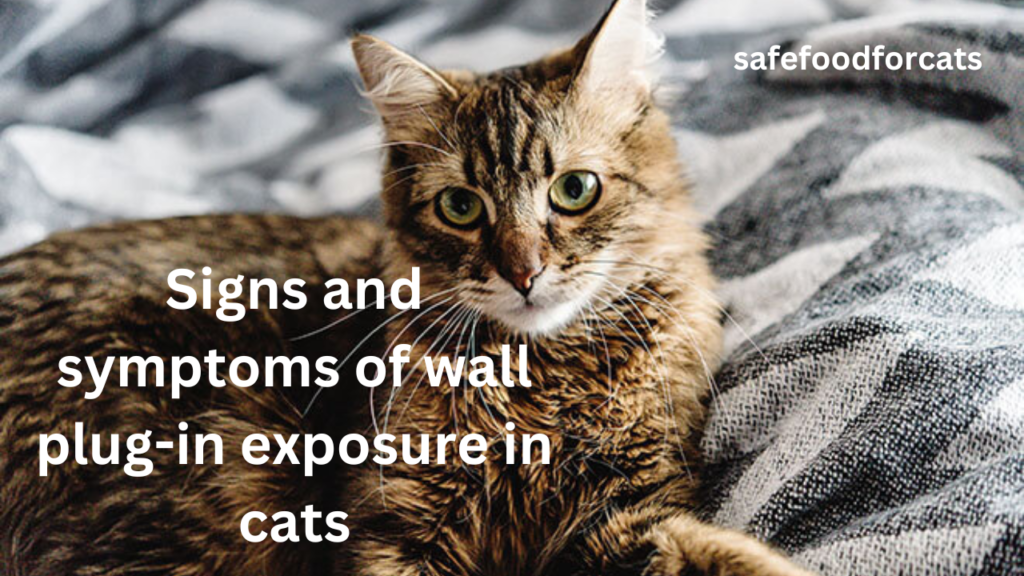
Preventive measures to make wall plug-ins safer for cats
While wall plug-ins carry potential risks, there are steps you can take to make them safer for your feline companions. Consider the following preventive measures:
Choosing pet-safe alternatives
Look for wall plug-ins that are specifically labeled as safe for pets. These alternatives are usually free from harmful chemicals and use non-toxic ingredients that are safe for both humans and cats.
Using natural alternatives
Consider using natural alternatives to wall plug-ins, such as dried herbs, flowers, or essential oil diffusers that are pet-friendly. These alternatives provide a pleasant scent without the potential dangers associated with synthetic fragrances.
Keeping wall plug-ins out of reach
Place wall plug-ins in areas that are inaccessible to your cat, such as high shelves or behind furniture. This minimizes the likelihood of accidental ingestion or contact with the device.
Ensuring proper ventilation
To reduce the concentration of airborne chemicals, ensure proper ventilation in the area where wall plug-ins are used. Open windows or use fans to circulate fresh air and prevent the buildup of potentially toxic fumes.
Using plug guards or covers
If you are unable to keep wall plug-ins out of your cat’s reach, consider using plug guards or covers to prevent access to the electrical cords or outlets. These can be easily installed and provide an added layer of protection.
Regularly monitoring your cat’s behavior
Keep a close eye on your cat’s behavior and overall health. If you notice any unusual signs or symptoms, consult with a veterinarian promptly. Early detection and intervention can minimize the potential risks associated with wall plug-in exposure.
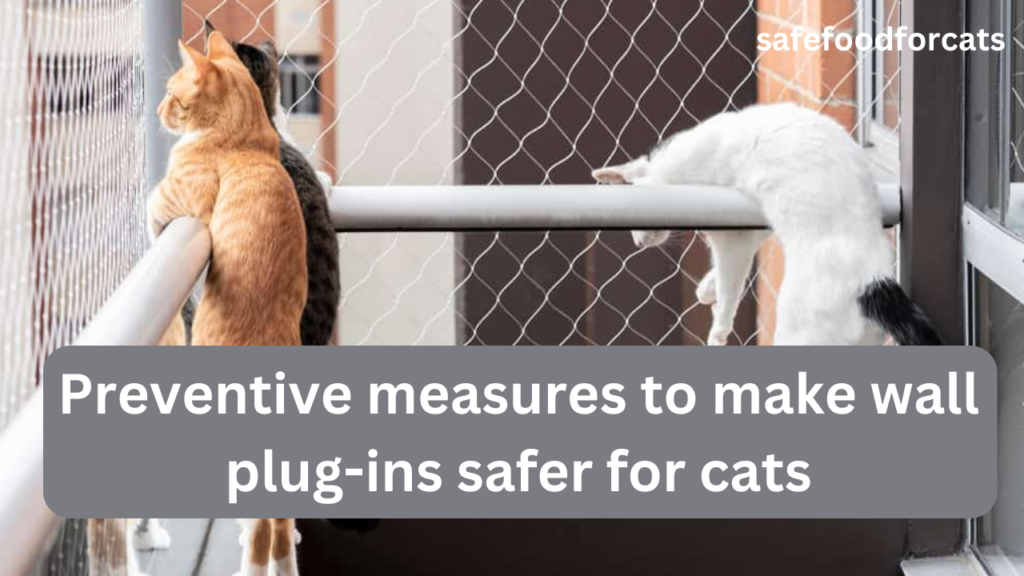
Safer alternatives to wall plug-ins for cat owners
If you are concerned about the potential dangers of wall plug-ins, there are safer alternatives available that can help freshen the air in your home without compromising your cat’s safety. Consider the following alternatives:
Candle and essential oil diffusers
Use candles made from natural waxes, such as soy or beeswax, and essential oil diffusers that are specifically labeled as safe for cats. Opt for pet-friendly essential oils and ensure proper ventilation in the area.
Organic and natural air fresheners
Look for organic or natural air fresheners that use plant-based ingredients and essential oils. These alternatives provide a pleasant fragrance without the potential risks associated with synthetic chemicals.
Non-toxic room sprays
Choose non-toxic room sprays that are specifically formulated for use around cats. These products typically use natural fragrances and do not contain harmful chemicals or artificial scents.
DIY natural odor eliminators
Create homemade odor eliminators using natural ingredients such as baking soda, vinegar, or citrus-infused water. These natural options can effectively neutralize odors without posing any risks to your cat’s health.
Proper ventilation and air purification
Ensure good airflow by opening windows or using fans to circulate fresh air throughout your home. Consider investing in air purifiers with activated carbon filters to help remove odors and chemical pollutants from the indoor air.

Dealing with wall plug-in exposure in cats
If you suspect that your cat has been exposed to wall plug-ins and is showing signs of distress, it is important to take immediate action to ensure their safety and well-being.
Immediate actions to take
If you catch your cat in the act of chewing on or playing with a wall plug-in, remove them from the area and safely dispose of any small parts or inserts they may have dislodged or swallowed. Make sure to use gloves or wash your hands thoroughly to avoid any potential skin irritation.
Contacting a veterinarian
If your cat is exhibiting signs of toxicity or experiencing severe symptoms, contact your veterinarian immediately. They can provide guidance on the appropriate steps to take based on your cat’s condition.
Treatment options
The treatment for wall plug-in exposure in cats will depend on the specific circumstances and symptoms presented. In cases of ingestion, your veterinarian may induce vomiting, administer activated charcoal to absorb any remaining toxins, and provide supportive care to manage any adverse effects.
Supportive care for cats
Supportive care may include intravenous fluids to maintain hydration, medications to alleviate symptoms, and oxygen therapy to support respiratory function, if necessary. Your veterinarian will determine the most appropriate treatment plan based on your cat’s individual needs.
Recovery and monitoring
Following proper treatment and care, most cats will recover from wall plug-in exposure. However, it is important to closely monitor your cat’s recovery and watch for any recurrence of symptoms. Regular check-ups with your veterinarian can help ensure your cat’s continued well-being.
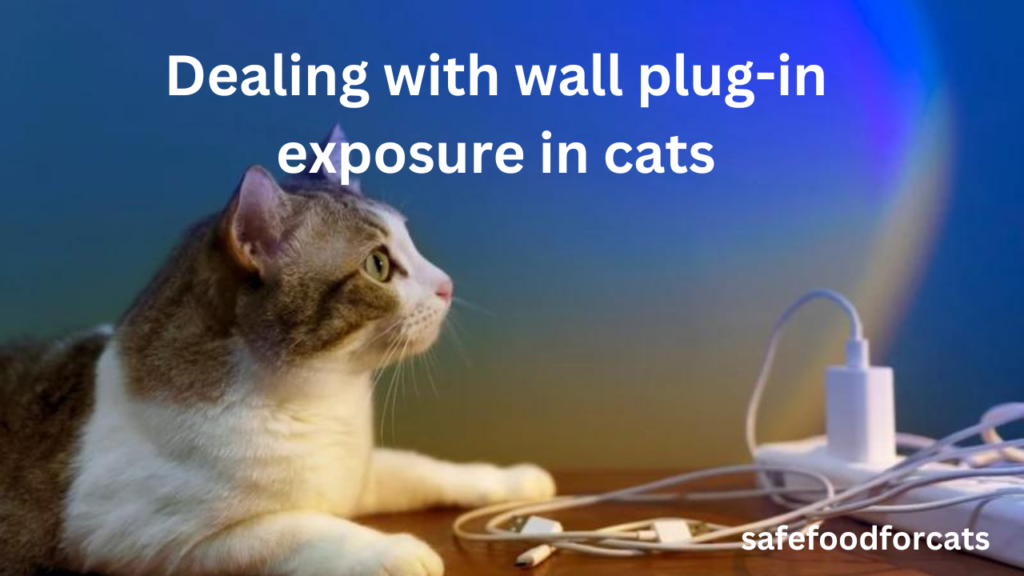
Educating yourself about cat safety and household products
To create a safe environment for your cat, it is essential to educate yourself about potential dangers and make informed choices when it comes to household products, including wall plug-ins.
Reading product labels
Read product labels carefully to identify any potential hazards, ingredients to avoid, or specific safety instructions. Look for products that are labeled as pet-friendly or safe for use around cats.
Understanding potential dangers
Familiarize yourself with the potential dangers associated with different types of wall plug-ins and their components. This knowledge will help you make educated decisions and take appropriate precautions to protect your cat.
Researching cat-friendly alternatives
Take the time to research and explore cat-friendly alternatives to wall plug-ins. Look for products that have been specifically formulated to be safe for cats and do not pose any potential risks to their health.
Consulting with a veterinarian
If you have any doubts or concerns about the safety of a particular product or household item, consult with your veterinarian. They can provide guidance and recommend alternative options that are safe for your cat.
Conclusion
While wall plug-ins may seem harmless and convenient, they can pose potential dangers to our beloved feline companions. From toxicity and respiratory issues to electrical hazards and fire risks, it is crucial to be aware of the risks and take preventive measures to keep our cats safe.
By choosing pet-safe alternatives, ensuring proper ventilation, and closely monitoring our cats for any signs of exposure, we can create a safer environment for our furry friends. Educate yourself about cat safety, read product labels, and consult with your veterinarian to make informed decisions and choose alternatives that prioritize your cat’s well-being.
Remember, your cat’s health and safety should always be a top priority, and by taking the necessary precautions, you can enjoy a fresh and pleasant-smelling home without compromising your pet’s health.

